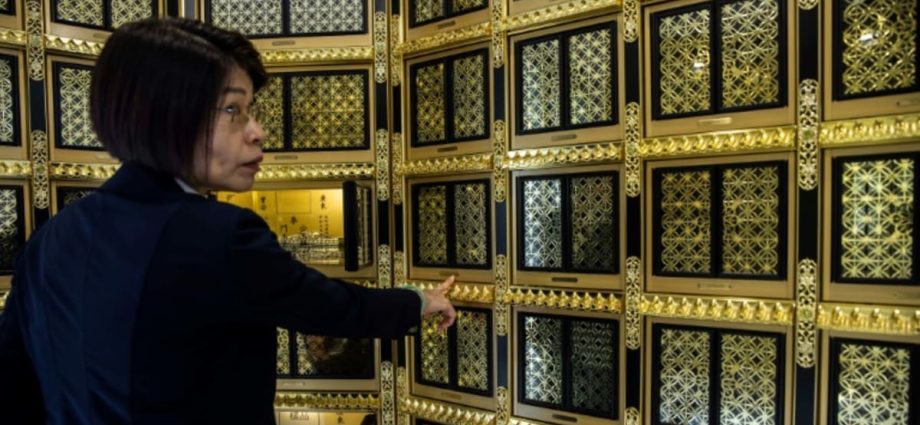
Kirchhoff said his design was inspired by traditional Chinese graveyards, which are often perched on mountainsides. His columbarium carried over those undulating lines, greenery and textures of hewn rock.
Ashes are stored in ornate compartments, some as small as 26cm by 34cm, that line the walls of air-conditioned chambers.
Kirchhoff said he designed rooms on each floor to provide intimacy, in contrast to the cramped confines of public columbariums, which he said feel like being in a “warehouse”.
“How do we maintain quality of life and dignity for the people in this high density?” he asked.
“Is it just a shoebox or is there something else?”
URN SPACE SHORTAGE
Much like apartments in Hong Kong, rent for the units is not cheap, putting them beyond the reach of most people.
A basic two-person option at Shan Sum is sold for US$58,000 while the top-tier package, meant for a whole family, costs nearly US$3 million.
The median monthly household income in Hong Kong is currently around US$3,800, according to government data.
Places like Shan Sum were created in response to Hong Kong’s shortage of urn spaces a decade ago.
At the time, cremated remains were often stored in drawers at funeral parlours for years while waiting for spots to open up, or were housed in unlicensed columbariums in temples or refurbished factory buildings.
Historian Chau Chi-fung, who wrote a book on Hong Kong’s funeral practices, said the seeds of the crisis were sown decades prior by the British colonial administration, before the city was handed over to China in 1997.
“Laws at the time were strict about how to treat dead bodies, but once they were turned to ash, the government did not have a comprehensive policy for them,” he told AFP.
The ethnic Chinese population in Hong Kong historically preferred burials, but the government popularised cremation in the 1960s – a shift seen in dense urban centres across Asia.
Now around 95 per cent of Hong Kong’s dead are cremated each year, which Chau attributed to changing social mores.
The government estimates that deaths will increase by 14 per cent to 61,100 per year by 2031.
Officials say that the city is prepared for the uptick, with about 25 per cent vacancy among the current 425,000 public columbarium spots and more public and private supply in the pipeline.
“The situation has improved compared to a few years ago… The problem has been eased, but not solved,” Chau said.
“OCEAN VIEW”
Wing Wong, 43, last year laid her father to rest at Tsang Tsui Columbarium, a sprawling 4,800sq m complex in Hong Kong’s northwestern corner that began service in 2021.
She said her experience was a far cry from the horror stories seen in headlines years ago.
“Losing a loved one was painful enough. It would be a torment for family members if they couldn’t find a place for the ashes, with no idea how long they needed to wait,” she said.
Wong said her family chose the government-run location for its good feng shui, adding that its affordable pricing meant they had no incentive to consider private options.
“My father once said he wanted an ocean view… His (niche) was angled towards the sea, and we felt it was what he would have wanted.”

